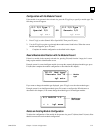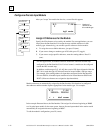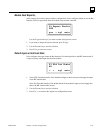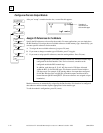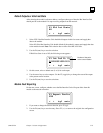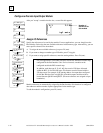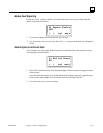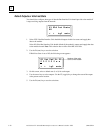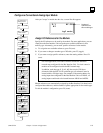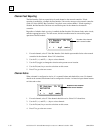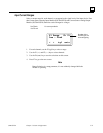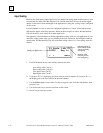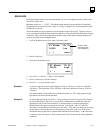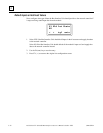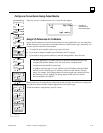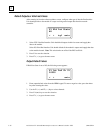
GFK-0825F Chapter 5 Station Configuration 5-29
5
Configure a Conventional Analog Input Module
After you "accept" a module into the slot, a screen like this appears:
S:1 AI:08
AI
tgl entr
Number of
references for
this module type
Assign I/O References for the Module
Specify the I/O references to be used by the module. For most applications, you can
simply have the Bus Interface Unit assign the next available references in that
memory type. Alternately, you can enter specific references for the module.
A. To assign the next available references, press F4 (entr).
B. If you want to change to another type of I/O table, press F3 (toggle).
C. If you want to assign specific references, enter the starting address. Press F4
(entr).
For most applications, all module references should fall within the
network map configured for the Bus Interface Unit. For local control, a
module can be configured outside the BIU network map.
In addition, each data type (I, Q, AI, AQ) has a total of 256 bytes
allocated within the BIU. So for each data type, all references must be
located within a 256-byte range. For example, if the starting address for
analog input data configured for the Bus Interface Unit was AI0101, all
analog inputs would need to be located between AI0101 and AI0228.
Module references are automatically assigned by the Bus Interface Unit based on its
configured data addresses, and the number of points appropriate for the module type.
To edit the module's configuration, press F4 (zoom).
S1 Faults Ch 01
YYYYYYYY
S1 Active Ch 01
YYYYYYYY
S1 Range Ch 01
0mA - 20mA
S1 Scale 1 Ch 01
00000 Eng lo
S1 Alarm Ch 01
00000 low
S1 Hld Lst State
NO
S1 Alarm Ch 01
00000 high
S1: AI:08
AI
S1 AI:08
AI001- AI008
S1: Mod Type ?
Analog 8 cur In
F4
F4
F4
S1 Ref Address
AI00001
F2
F1
F2
F1
F2
F1
Range for
other channels
F2
F1
F2
F1
S1 Scale 4 Ch 01
20000 Int hi
Scaling Units for
other channels
F2
F1
F2
F1
F2
F1
S1 Scale 1 Ch 01
20000 Eng hi
F2
F1
S1 Scale 4 Ch 01
00000 Int lo
F2
F1
F2
F1
Alarm Limits for
other channels
F2
F1
F2
F1
F2



